Table of Contents
Balancing blood sugar levels is a critical aspect of maintaining good health. Fluctuations in blood sugar, particularly high and low levels, can lead to a range of health issues, including diabetes, weight gain and energy crashes. The good news is that you can take control of your blood sugar by making mindful choices about the foods you eat. In this article, we will explore the essential foods that can help you manage your insulin levels and promote stable blood sugar.
Achieving and maintaining stable blood sugar levels is indeed a cornerstone of overall well-being and health. Let’s delve deeper into the importance of balanced blood sugar and explore additional strategies and foods to help you on your journey to stable insulin levels and sustained vitality:
1. Understanding the Impact: Fluctuations in blood sugar can have immediate and long-term consequences. Spikes in blood sugar, often triggered by high-glycemic foods like sugary snacks and refined carbohydrates, lead to energy crashes and mood swings. Over time, these fluctuations can contribute to insulin resistance, weight gain and the development of type 2 diabetes.
2. The Role of Insulin: Insulin is a hormone produced by your pancreas that helps regulate blood sugar levels. When you consume carbohydrates, especially those with a high glycemic index, your blood sugar rises, prompting the release of insulin to facilitate the uptake of glucose by cells. Choosing foods that promote steady insulin release is key to preventing those roller-coaster blood sugar spikes and crashes.
3. Complex Carbohydrates: Opt for complex carbohydrates like whole grains (brown rice, quinoa, oats), legumes (beans, lentils) and whole wheat products. These foods release glucose slowly into the bloodstream, preventing rapid blood sugar spikes.
4. Fiber-Rich Foods: Fiber is a blood sugar stabilizer. It slows the absorption of sugar, keeping your levels steady. Incorporate plenty of fruits, vegetables, nuts and seeds into your diet for an extra dose of fiber.
5. Lean Protein: Including lean sources of protein in your meals, such as poultry, fish, tofu and beans, can help balance blood sugar by promoting satiety and reducing the impact of carbohydrate consumption on blood sugar levels.
6. Healthy Fats: Foods rich in healthy fats, like avocados, nuts, seeds and olive oil, can help improve insulin sensitivity and reduce inflammation. They also contribute to a feeling of fullness, reducing the likelihood of overeating.
7. Portion Control: Pay attention to portion sizes. Eating reasonable portions can prevent overloading your system with carbohydrates and causing rapid blood sugar spikes.
8. Regular Meals: Don’t skip meals. Eating regular, balanced meals throughout the day helps maintain steady blood sugar levels and provides a consistent source of energy.
9. Snack Smart: Choose healthy snacks like Greek yogurt, a handful of nuts or sliced vegetables with hummus. These options can help you avoid energy crashes between meals.
10. Hydration: Staying hydrated is crucial for overall health, including blood sugar regulation. Water helps transport glucose to cells, so be sure to drink an adequate amount throughout the day.
11. Mindful Eating: Practicing mindful eating can be beneficial. Pay attention to hunger cues and listen to your body’s signals for when to eat and when to stop.
12. Regular Exercise: Physical activity plays a vital role in blood sugar management. Regular exercise helps improve insulin sensitivity and can assist in maintaining stable levels.
By incorporating these strategies and foods into your daily routine, you can take control of your blood sugar levels and promote long-term health. Maintaining stable insulin levels not only supports your physical well-being but also provides a foundation for sustained energy and vitality, ensuring you can fully embrace each day with vigor and good health.
Should you desire more in-depth information, it’s available for your perusal on this page: Enablers and barriers to effective diabetes self-management: A multi …
Understanding Blood Sugar and Insulin
Before we delve into the essential foods, it’s crucial to understand the basics of blood sugar and insulin. When you eat, your body breaks down carbohydrates into glucose, a type of sugar that provides energy to your cells. To regulate blood sugar levels, the pancreas releases a hormone called insulin, which helps transport glucose into cells for energy or storage. However, problems arise when there is too much or too little glucose in the bloodstream, leading to health complications.
Certainly, comprehending the fundamentals of blood sugar and insulin regulation is essential for maintaining overall health and preventing various health complications. Let’s delve deeper into this topic to gain a more comprehensive understanding:
Blood Sugar Regulation:
The Role of Glucose: Glucose is the primary source of energy for our cells. When we consume carbohydrates, our digestive system breaks them down into glucose, which enters the bloodstream. From there, it circulates throughout the body, providing energy to cells.
Insulin’s Crucial Role: To keep blood sugar levels in check, the pancreas plays a pivotal role by releasing insulin in response to rising glucose levels after a meal. Insulin acts as a key that unlocks cells, allowing them to take in glucose from the bloodstream. This process ensures that cells receive the energy they need for various functions.
Challenges in Blood Sugar Regulation:
Hyperglycemia: When there is an excessive amount of glucose in the bloodstream, it leads to a condition called hyperglycemia. This can occur when the body doesn’t produce enough insulin (as in type 1 diabetes) or when cells become resistant to insulin (as in type 2 diabetes). Chronic hyperglycemia can damage blood vessels, nerves and organs, contributing to complications like heart disease, kidney disease and vision problems.
Hypoglycemia: On the other hand, hypoglycemia occurs when blood sugar levels drop too low. This can happen if too much insulin is released or if there’s a mismatch between insulin levels and carbohydrate intake. Hypoglycemia can lead to symptoms like dizziness, confusion, and, in severe cases, unconsciousness.
The Importance of Balanced Nutrition:
Carbohydrates and Blood Sugar: The type and amount of carbohydrates consumed play a significant role in blood sugar regulation. Complex carbohydrates from sources like whole grains, vegetables and legumes are digested more slowly, leading to a gradual rise in blood sugar levels. This steady release of glucose allows for better blood sugar control. In contrast, simple carbohydrates found in sugary foods and refined grains can cause rapid spikes in blood sugar.
Protein and Fat: Including protein and healthy fats in meals can help stabilize blood sugar levels. They slow down the absorption of carbohydrates, preventing sharp spikes and crashes in blood sugar. Additionally, a balanced diet with a variety of nutrients supports overall health and can help prevent problems related to blood sugar regulation.
Regular Meals and Portion Control: Eating regular, balanced meals and controlling portion sizes can help maintain stable blood sugar levels throughout the day. Skipping meals or overeating can disrupt this balance.
Lifestyle and Health Management:
Physical Activity: Regular physical activity can enhance insulin sensitivity, making it easier for cells to take up glucose. Exercise also helps maintain a healthy weight, which is crucial for blood sugar control.
Stress Management: Chronic stress can affect blood sugar levels. Learning stress-reduction techniques such as meditation, deep breathing or yoga can be beneficial.
In conclusion, understanding the intricacies of blood sugar regulation and insulin function is pivotal for overall well-being. Balanced nutrition, a healthy lifestyle and awareness of individual factors (such as genetics and pre-existing conditions) all contribute to maintaining optimal blood sugar levels and preventing complications associated with fluctuations in blood sugar.
Looking for more insights? You’ll find them right here in our extended coverage: The Liver & Blood Sugar :: Diabetes Education Online

Fiber-Rich Foods
Fiber plays a crucial role in stabilizing blood sugar levels. Soluble fiber, found in foods like oats, beans and lentils, slows down the digestion and absorption of carbohydrates, preventing rapid spikes in blood sugar.
Fiber takes center stage in maintaining stable blood sugar levels, offering a pivotal role in your dietary approach. Particularly, soluble fiber, abundant in foods such as oats, beans and lentils, proves to be a remarkable ally. As you consume these fiber-rich foods, soluble fiber steps in to regulate the pace of carbohydrate digestion and absorption. By doing so, it effectively prevents sudden and sharp spikes in blood sugar that can often be detrimental to overall health.
This controlled and gradual absorption of carbohydrates helps to maintain a more stable and balanced blood sugar level, which is especially beneficial for individuals managing conditions like diabetes or insulin resistance. Incorporating soluble fiber-rich foods into your meals not only supports blood sugar control but also contributes to a satisfying and nourishing diet, promoting lasting wellness and preventing potential health complications.
To expand your knowledge on this subject, make sure to read on at this location: 14 Easy Ways to Lower Blood Sugar Levels Naturally
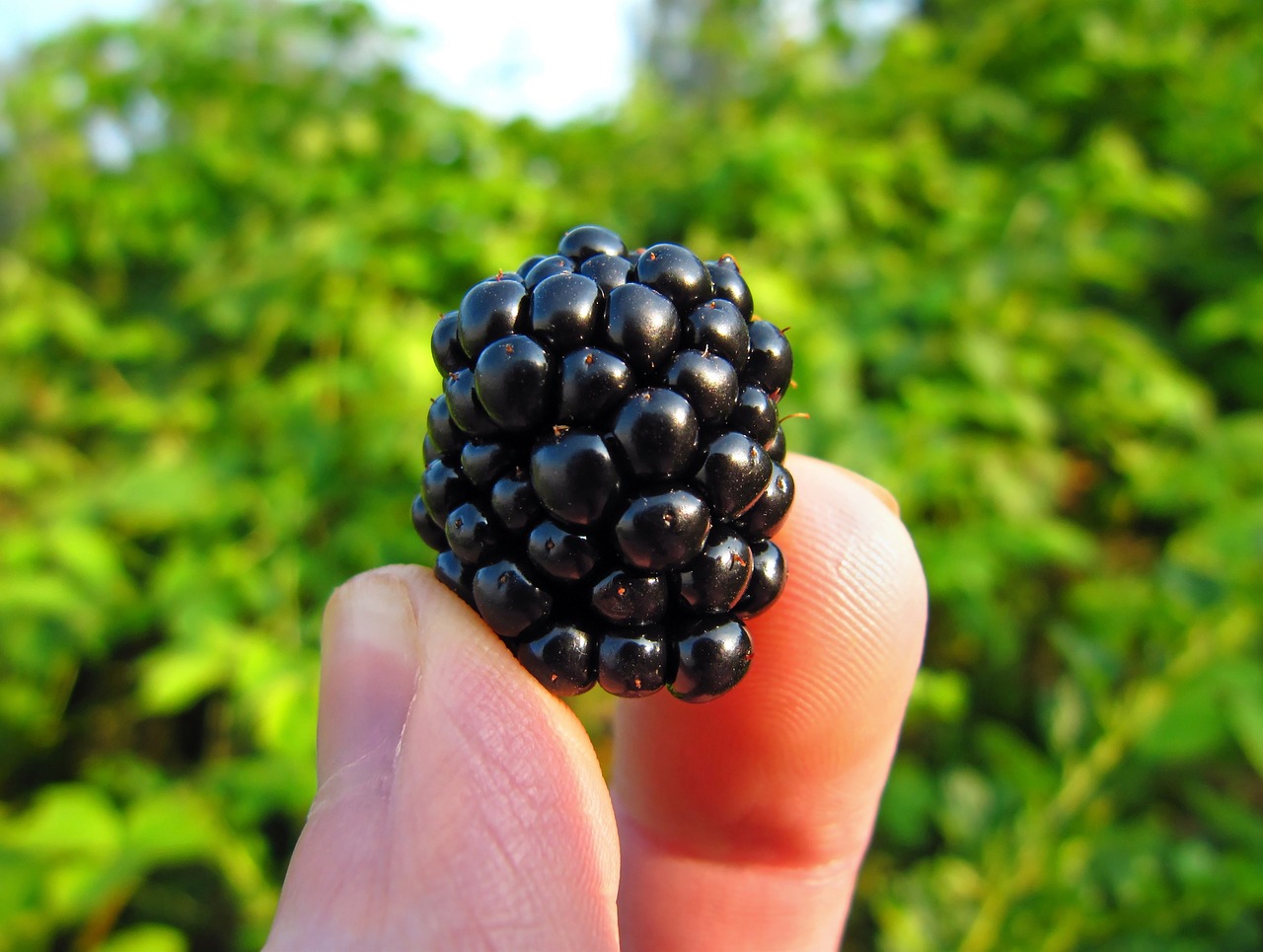
Leafy Greens
Vegetables like spinach, kale and collard greens are rich in magnesium, which is associated with improved insulin sensitivity. Incorporate these greens into your meals to support blood sugar control.
The vibrant world of vegetables is teeming with nutrients that play a crucial role in our health and among them, magnesium stands out as a mineral with remarkable benefits, particularly when it comes to blood sugar control and insulin sensitivity.
Magnesium and Insulin Sensitivity: Magnesium is an essential mineral that has been linked to improved insulin sensitivity. When you consume magnesium-rich foods like spinach, kale and collard greens, you’re providing your body with a nutrient that can enhance the effectiveness of insulin, the hormone responsible for regulating blood sugar levels. Improved insulin sensitivity means your cells are more responsive to insulin’s signals, allowing for better control of blood sugar.
Steady Energy Release: Magnesium also plays a role in energy metabolism. It helps convert the food you eat into energy that your body can use. By maintaining adequate magnesium levels, you support your body in efficiently utilizing glucose for energy, preventing erratic blood sugar spikes and crashes.
Inflammation Reduction: Chronic inflammation is often associated with insulin resistance and impaired blood sugar control. Magnesium possesses anti-inflammatory properties and by incorporating magnesium-rich greens into your diet, you can help reduce inflammation, which, in turn, promotes better insulin sensitivity.
Heart Health: Magnesium is not only beneficial for blood sugar control but also for cardiovascular health. It supports healthy blood pressure, which is crucial for individuals with diabetes or those at risk of developing it. By prioritizing magnesium-rich vegetables, you’re taking proactive steps to protect your heart and overall well-being.
Incorporating spinach, kale, collard greens and other magnesium-rich vegetables into your meals can be as simple as tossing them into salads, sautéing them as a side dish or blending them into smoothies. By doing so, you not only elevate the flavors of your dishes but also empower your body to better manage blood sugar levels and reduce the risk of insulin resistance. These greens are a testament to the nutritional prowess of vegetables, offering a holistic approach to supporting your health, one delicious meal at a time.
Should you desire more in-depth information, it’s available for your perusal on this page: 8 Ways to Lower Your Blood Sugar | Grady Health
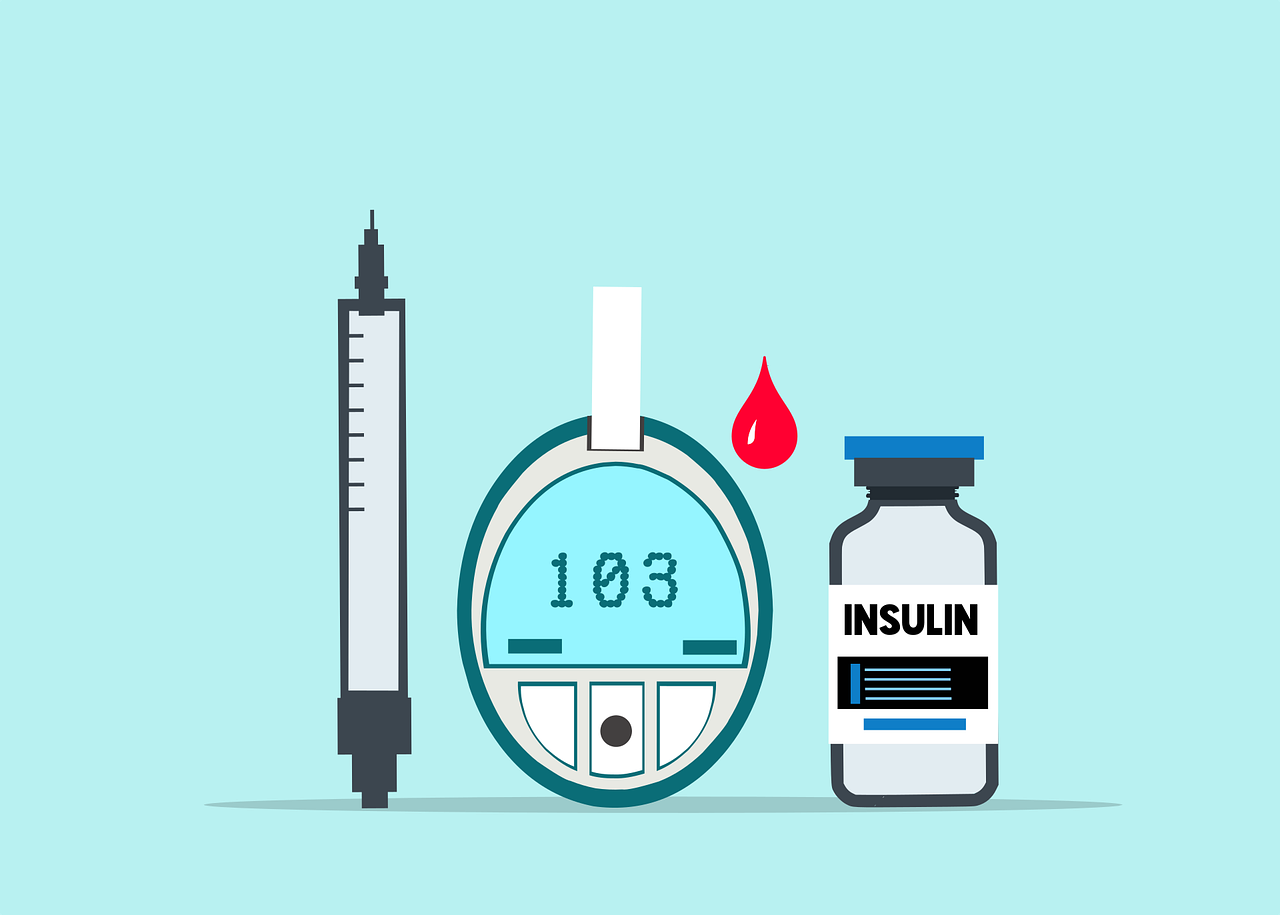
Berries
Berries, such as blueberries, strawberries and raspberries, are low in sugar and high in antioxidants and fiber. They have a minimal impact on blood sugar while providing a burst of flavor and nutrients.
Berries, with their vibrant colors and delectable taste, are like nature’s bite-sized treasures that offer a myriad of health benefits. Among them, blueberries, strawberries and raspberries stand out as low-sugar, high-nutrient powerhouses that can be a delightful addition to your daily diet.
Antioxidant Abundance: Berries are renowned for their antioxidant content, particularly flavonoids and polyphenols. These compounds have the remarkable ability to combat oxidative stress in the body, which is linked to a range of chronic diseases and the aging process. Consuming berries regularly can be a delicious way to fortify your body’s defense against cellular damage.
Low Sugar, High Fiber: Unlike some fruits, berries are naturally low in sugar and high in fiber. This unique combination makes them an ideal choice for those looking to manage their blood sugar levels. The fiber in berries helps stabilize blood sugar, preventing rapid spikes and crashes, which is especially important for individuals with diabetes or those seeking to maintain steady energy throughout the day.
Heart Health: Berries offer cardiovascular benefits as well. Their high levels of anthocyanins—a type of flavonoid—have been associated with a reduced risk of heart disease. Consuming berries may help lower blood pressure, improve cholesterol profiles and enhance overall heart health.
Cognitive Function: Emerging research suggests that the antioxidants in berries may also play a role in supporting cognitive function and reducing the risk of age-related cognitive decline. Regular consumption of berries is linked to improved memory and brain health.
Weight Management: Berries are a weight-conscious choice due to their low calorie content and high fiber, which promotes a feeling of fullness. Including them in your meals or snacks can help control appetite and reduce overall calorie intake.
Skin Beauty: The antioxidants in berries contribute to healthy, radiant skin by protecting it from the effects of UV radiation and environmental toxins. They can also promote collagen production, helping to maintain youthful and supple skin.
Easy to Incorporate: Berries are incredibly versatile and can be easily incorporated into your diet. They make a delightful addition to yogurt, oatmeal, smoothies, salads and desserts. Whether fresh, frozen or dried, they offer a burst of flavor and nutrition to any dish.
By savoring the goodness of berries like blueberries, strawberries and raspberries, you’re not only indulging your taste buds but also nourishing your body with a treasure trove of antioxidants, fiber and essential nutrients. Their minimal impact on blood sugar makes them a smart choice for maintaining energy levels and overall health. So, next time you reach for a snack or plan a meal, consider the delightful addition of these colorful and nutritious gems.
To expand your knowledge on this subject, make sure to read on at this location: Manage Blood Sugar | Diabetes | CDC

Cinnamon
Cinnamon is a potent spice known for its ability to improve insulin sensitivity and lower blood sugar levels. Sprinkle it on oatmeal or add it to your morning coffee for a delightful and healthful boost.
Cinnamon, with its warm and inviting aroma, is not just a culinary delight but also a powerful ally in the quest for better health. This remarkable spice has gained acclaim for its ability to positively impact our bodies, particularly in terms of improving insulin sensitivity and regulating blood sugar levels.
Insulin Sensitivity: Cinnamon contains compounds that enhance our cells’ response to insulin, a hormone crucial for regulating blood sugar. By improving insulin sensitivity, cinnamon helps our bodies better utilize glucose, promoting stable energy levels and reducing the risk of insulin resistance.
Blood Sugar Regulation: One of cinnamon’s most celebrated attributes is its potential to lower blood sugar levels. It does this by slowing down the breakdown of carbohydrates in the digestive tract, preventing sudden spikes in blood glucose after meals. This steadying effect can be particularly beneficial for individuals with diabetes or those aiming to manage their weight.
Incorporating cinnamon into your daily routine can be a delightful and healthful endeavor. Here are some creative ways to enjoy its benefits:
Oatmeal and Cereal: Sprinkle a generous pinch of cinnamon onto your morning oatmeal or cereal. Not only does it add a warm, comforting flavor, but it also provides a healthful boost to your breakfast.
Coffee and Tea: Stir a dash of cinnamon into your morning coffee, latte or tea. It infuses your daily caffeine fix with a touch of spice and wellness.
Smoothies: Add a hint of cinnamon to your favorite smoothie for an extra layer of flavor and health benefits. It pairs wonderfully with ingredients like banana, yogurt and honey.
Baked Goods: Use cinnamon in your baking endeavors, whether it’s muffins, pancakes or apple pie. It imparts a fragrant warmth that elevates the overall taste of your treats.
Roasted Vegetables: Experiment with savory dishes by incorporating cinnamon into your roasted vegetable recipes. It complements the natural sweetness of root vegetables like carrots and sweet potatoes.
As you savor the delightful essence of cinnamon in your meals and beverages, you’re not only enjoying its flavor but also reaping the rewards of improved insulin sensitivity and regulated blood sugar levels. It’s a small yet meaningful step toward a healthier and more vibrant you and it adds a touch of spice to your wellness journey.
To delve further into this matter, we encourage you to check out the additional resources provided here: Cinnamon Can Help Lower Blood Sugar, But One Variety May Be …

Nuts and Seeds
Almonds, chia seeds and flaxseeds are excellent sources of healthy fats, fiber and protein. They help slow the absorption of carbohydrates, preventing blood sugar spikes.
Certainly, here’s an extended idea:
“Almonds, chia seeds and flaxseeds are nutritional powerhouses that offer a multitude of health benefits, with their ability to slow the absorption of carbohydrates being just one of their many virtues. These foods are not only rich in essential nutrients but also play a crucial role in promoting overall well-being and maintaining stable blood sugar levels.
1. Healthy Fats for Satiety and Heart Health:
- Almonds are an excellent source of heart-healthy monounsaturated fats, which not only help keep you feeling full and satisfied but also have been associated with a reduced risk of cardiovascular disease. Incorporating almonds into your diet can provide satiety, preventing overeating and helping with weight management.
- Chia seeds are packed with omega-3 fatty acids, particularly alpha-linolenic acid (ALA), which is known for its anti-inflammatory and heart-protective properties. These healthy fats contribute to the overall balance of your diet and support cardiovascular health.
- Flaxseeds are another abundant source of ALA omega-3 fatty acids, making them an excellent choice for heart health. They can help reduce the risk of heart disease, lower blood pressure and improve cholesterol profiles.
2. Fiber for Digestive Health and Blood Sugar Control:
- Almonds contain dietary fiber, which aids in digestion and helps prevent blood sugar spikes. The fiber content in almonds slows the absorption of sugars and carbohydrates, providing sustained energy and preventing sudden blood sugar fluctuations.
- Chia seeds and flaxseeds are exceptional sources of soluble and insoluble fiber. Soluble fiber forms a gel-like substance in the digestive tract, slowing down the digestion and absorption of carbohydrates. This, in turn, helps regulate blood sugar levels and provides a feeling of fullness.
3. Protein for Sustained Energy:
- Almonds are a good source of plant-based protein, making them an ideal snack choice for maintaining energy levels throughout the day. Protein helps stabilize blood sugar by slowing the release of glucose into the bloodstream.
- Chia seeds and flaxseeds also contain protein, which, when combined with their fiber content, offers a dual benefit of preventing blood sugar spikes and promoting a feeling of fullness.
Incorporating these foods into your daily diet is simple and versatile. You can enjoy almonds as a snack, add chia seeds to smoothies or yogurt and include ground flaxseeds in your baked goods or oatmeal. By doing so, you not only support stable blood sugar levels but also nourish your body with essential nutrients, including vitamins, minerals and antioxidants. This combination of healthy fats, fiber and protein not only helps prevent blood sugar spikes but also contributes to an overall nutritious and balanced diet, supporting your long-term health and well-being.”
To expand your knowledge on this subject, make sure to read on at this location: Fiber: The Carb That Helps You Manage Diabetes | Diabetes | CDC
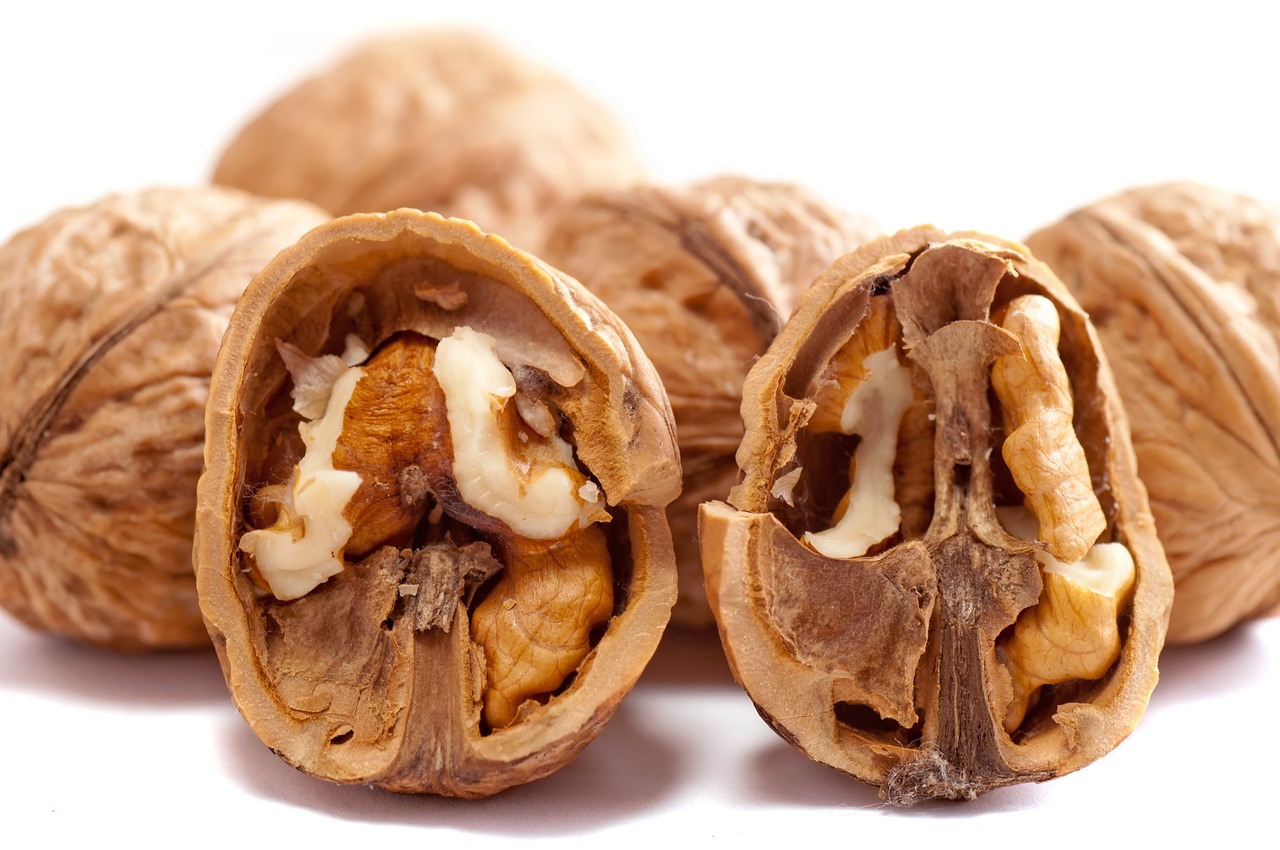
Protein-Rich Foods
Foods like lean poultry, fish, tofu and legumes provide a steady source of energy without causing rapid changes in blood sugar levels.
When it comes to sustaining your energy levels throughout the day, the choice of foods can make all the difference. Opting for nutrient-dense options like lean poultry, fish, tofu and legumes is a smart move not only for maintaining a steady source of energy but also for promoting overall well-being.
Lean poultry, such as skinless chicken or turkey, is a fantastic protein source that offers lasting energy. The protein in poultry is digested slowly, which means it provides a steady release of amino acids into your bloodstream. This sustained release helps maintain stable blood sugar levels and prevents the rapid spikes and crashes that can leave you feeling tired and irritable.
Fish, especially fatty varieties like salmon and mackerel, is another excellent choice for sustained energy. Not only is fish rich in high-quality protein, but it also provides heart-healthy omega-3 fatty acids. Omega-3s are known for their anti-inflammatory properties and can help regulate blood sugar levels, reducing the risk of energy dips.
Tofu, a staple in vegetarian and vegan diets, is a versatile plant-based protein that offers a steady and reliable source of energy. Its low glycemic index ensures that it has minimal impact on blood sugar levels, helping you stay energized for longer periods. Tofu is also packed with essential nutrients like iron and calcium, contributing to overall vitality.
Legumes, including beans, lentils and chickpeas, are plant-based powerhouses known for their energy-sustaining properties. They provide a combination of protein, fiber and complex carbohydrates, offering a balanced nutrient profile that promotes stable blood sugar levels. This combination of nutrients ensures a gradual release of energy, preventing the sudden energy crashes associated with high-sugar or processed foods.
Incorporating these energy-boosting foods into your diet not only supports your day-to-day activities but also helps you maintain focus and mental clarity. By providing your body with a steady and reliable source of energy, you can better manage tasks and challenges throughout the day without experiencing the energy fluctuations that can disrupt your productivity and mood.
Additionally, these nutrient-dense options contribute to overall well-being by supplying your body with essential vitamins, minerals and antioxidants. They support muscle repair and growth, aid in immune function and play a role in maintaining healthy bones and tissues.
So, whether you’re enjoying a grilled chicken breast, savoring a salmon fillet, experimenting with tofu stir-fry or relishing a hearty bowl of lentil soup, know that you’re not just satisfying your taste buds—you’re also fueling your body with the sustained energy it needs to thrive. These wholesome choices are like a constant and reliable energy source, helping you power through your day with vigor and vitality.
If you’d like to dive deeper into this subject, there’s more to discover on this page: Foods for stabilizing insulin and blood sugar levels

Avocado
Avocados are rich in monounsaturated fats, which can help improve insulin sensitivity. They also provide fiber and essential nutrients for overall health.
Avocados are a nutritional powerhouse, celebrated not only for their creamy texture and delicious flavor but also for their remarkable health benefits. Their unique combination of monounsaturated fats, fiber and essential nutrients makes them a standout addition to a balanced diet, offering advantages that extend well beyond the taste buds.
Monounsaturated Fats for Heart Health: Avocados are notably rich in monounsaturated fats, particularly oleic acid, which has been associated with improved cardiovascular health. These healthy fats can help lower bad LDL cholesterol levels while raising good HDL cholesterol, reducing the risk of heart disease.
Enhanced Insulin Sensitivity: Consuming avocados can contribute to better insulin sensitivity, a crucial factor in blood sugar regulation. This makes avocados particularly beneficial for individuals with type 2 diabetes or those aiming to maintain stable blood sugar levels.
Fiber for Digestive Health: Avocados are a great source of dietary fiber, which supports digestive health in several ways. Fiber aids in regular bowel movements, prevents constipation and supports a healthy gut microbiome, promoting overall digestive well-being.
Nutrient-Rich Superfood: Avocados are packed with essential nutrients, including vitamins C, K, E and various B vitamins, such as folate. They also contain minerals like potassium, which is crucial for maintaining healthy blood pressure and muscle function.
Antioxidant Protection: Avocados are a source of antioxidants, including vitamin E and lutein, which help protect cells from oxidative damage. These antioxidants contribute to healthy aging and may reduce the risk of age-related eye conditions.
Satiety and Weight Management: The combination of healthy fats and fiber in avocados can help you feel full and satisfied, reducing the temptation for unhealthy snacking. This can be a valuable tool in weight management and supporting overall wellness goals.
Versatile Culinary Ingredient: Avocados are incredibly versatile and can be incorporated into a wide range of dishes. From salads and sandwiches to smoothies and even desserts, their creamy texture and mild flavor make them a delightful addition to various culinary creations.
Incorporating avocados into your diet is not just about enjoying a delicious and creamy fruit; it’s about making a conscious choice for better health. Whether you’re looking to improve heart health, support digestive wellness or simply enhance the nutritional value of your meals, avocados are a nutritious and flavorful ally in your journey to a healthier, more vibrant you. So, embrace the avocado and savor the benefits it brings to your overall well-being.
Don’t stop here; you can continue your exploration by following this link for more details: Diabetes Diet, Eating, & Physical Activity – NIDDK
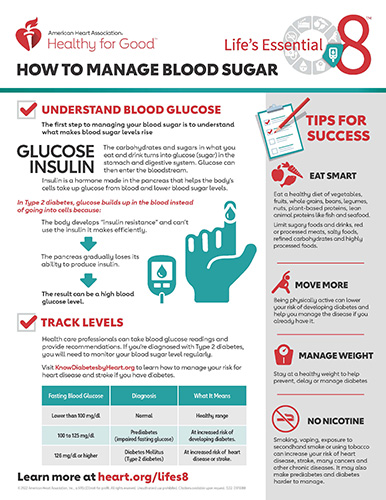
Turmeric
This vibrant spice contains curcumin, known for its anti-inflammatory properties and potential to improve insulin function. Incorporate turmeric into your cooking for added flavor and health benefits.
Turmeric, with its brilliant golden hue and earthy flavor, is not just a spice; it’s a culinary gem that also boasts a wealth of health benefits. At the heart of its medicinal allure lies curcumin, a bioactive compound renowned for its remarkable anti-inflammatory properties and potential to enhance insulin function. Embracing turmeric in your culinary adventures not only elevates the flavor of your dishes but also introduces a host of potential health perks.
Anti-Inflammatory Powerhouse: Curcumin is celebrated for its potent anti-inflammatory abilities. Chronic inflammation is a common denominator in many chronic diseases, from heart disease to cancer. By incorporating turmeric into your cooking, you can introduce this natural anti-inflammatory agent to your diet, potentially reducing the risk of chronic health conditions.
Enhanced Insulin Sensitivity: Research suggests that curcumin may improve insulin sensitivity, making it a valuable ally in the fight against insulin resistance and type 2 diabetes. By supporting better insulin function, turmeric can aid in maintaining stable blood sugar levels and reduce the risk of metabolic disorders.
Digestive Aid: Turmeric has traditionally been used as a digestive aid, known for its potential to alleviate symptoms of indigestion and bloating. It may help stimulate the production of bile, aiding in the digestion of fats and promoting overall digestive comfort.
Antioxidant Protection: Curcumin is also recognized for its antioxidant properties. Antioxidants help neutralize harmful free radicals, protecting cells from oxidative damage. This antioxidant shield contributes to better overall health and may reduce the risk of age-related diseases.
Cognitive Support: Emerging research suggests that curcumin may have neuroprotective properties and could play a role in supporting cognitive function. It has been studied for its potential to improve memory and reduce the risk of neurodegenerative conditions like Alzheimer’s disease.
Incorporating turmeric into your cooking can be a delightful and health-conscious choice. You can add it to a variety of dishes, such as curries, soups, stews, roasted vegetables and even smoothies. To enhance its bioavailability, consider pairing turmeric with black pepper, which contains piperine, a compound that can enhance the absorption of curcumin.
Keep in mind that while turmeric offers promising health benefits, it’s not a cure-all and its effects may vary from person to person. It’s also essential to use it in moderation as part of a balanced diet. By making turmeric a regular ingredient in your culinary repertoire, you not only enrich the flavors of your meals but also embrace a natural source of well-being that has been celebrated for centuries.
You can also read more about this here: The Effects of Ginger on Fasting Blood Sugar, Hemoglobin A1c …

Balancing Act: Combining Essential Foods
Balancing blood sugar is not just about individual foods but also about creating balanced meals. By combining these essential foods in your diet, you can promote stable blood sugar levels and reduce the risk of insulin resistance, prediabetes and type 2 diabetes.
Balancing blood sugar levels is indeed a holistic endeavor that goes beyond individual food choices; it revolves around crafting well-balanced meals that support overall health. By strategically combining essential foods in your diet, you can take proactive steps to promote stable blood sugar levels and reduce the risk of insulin resistance, prediabetes and type 2 diabetes.
1. A Protein Partner: Pairing carbohydrates with protein-rich foods can slow down the absorption of sugars in your bloodstream, helping to prevent rapid spikes and crashes in blood sugar levels. Foods like lean poultry, fish, tofu and legumes are excellent sources of protein that complement carbohydrates. For instance, enjoy whole-grain bread with turkey or a colorful salad with chickpeas to create a balanced meal.
2. Fiber Friends: Fiber plays a pivotal role in regulating blood sugar levels by slowing the digestion and absorption of carbohydrates. Incorporating high-fiber foods like vegetables, fruits, whole grains and legumes into your meals not only promotes satiety but also helps maintain steady blood sugar levels. Opt for a hearty bowl of oatmeal topped with berries or a quinoa and vegetable stir-fry to infuse your diet with fiber.
3. Healthy Fats: Including sources of healthy fats, such as avocados, nuts, seeds and olive oil, in your meals can enhance blood sugar control. These fats contribute to feelings of fullness and can further mitigate the glycemic impact of carbohydrates. A drizzle of olive oil on your salad or a handful of almonds as a snack can be smart choices.
4. Portion Control: While balancing macronutrients is important, portion control plays a significant role in maintaining stable blood sugar levels. Be mindful of portion sizes to prevent overconsumption of carbohydrates. Opt for smaller servings of starchy foods and load up on non-starchy vegetables to create satisfying yet balanced meals.
5. Consistent Eating Schedule: Establishing regular meal times and avoiding prolonged gaps between meals can help keep blood sugar levels steady. Skipping meals or prolonged fasting can lead to fluctuations in blood sugar, so aim for consistency in your eating schedule.
6. Hydration Matters: Staying adequately hydrated is often overlooked but crucial for blood sugar control. Dehydration can lead to elevated blood sugar levels, so make it a habit to drink water throughout the day.
Incorporating these strategies into your dietary habits not only supports stable blood sugar levels but also promotes overall health and well-being. By creating balanced meals that include a combination of protein, fiber, healthy fats and appropriate portion sizes, you can take proactive steps to reduce the risk of blood sugar fluctuations and the associated health challenges. In essence, it’s about embracing a lifestyle that nourishes your body and empowers you to take charge of your health, one balanced meal at a time.
To expand your knowledge on this subject, make sure to read on at this location: Fiber: The Carb That Helps You Manage Diabetes | Diabetes | CDC
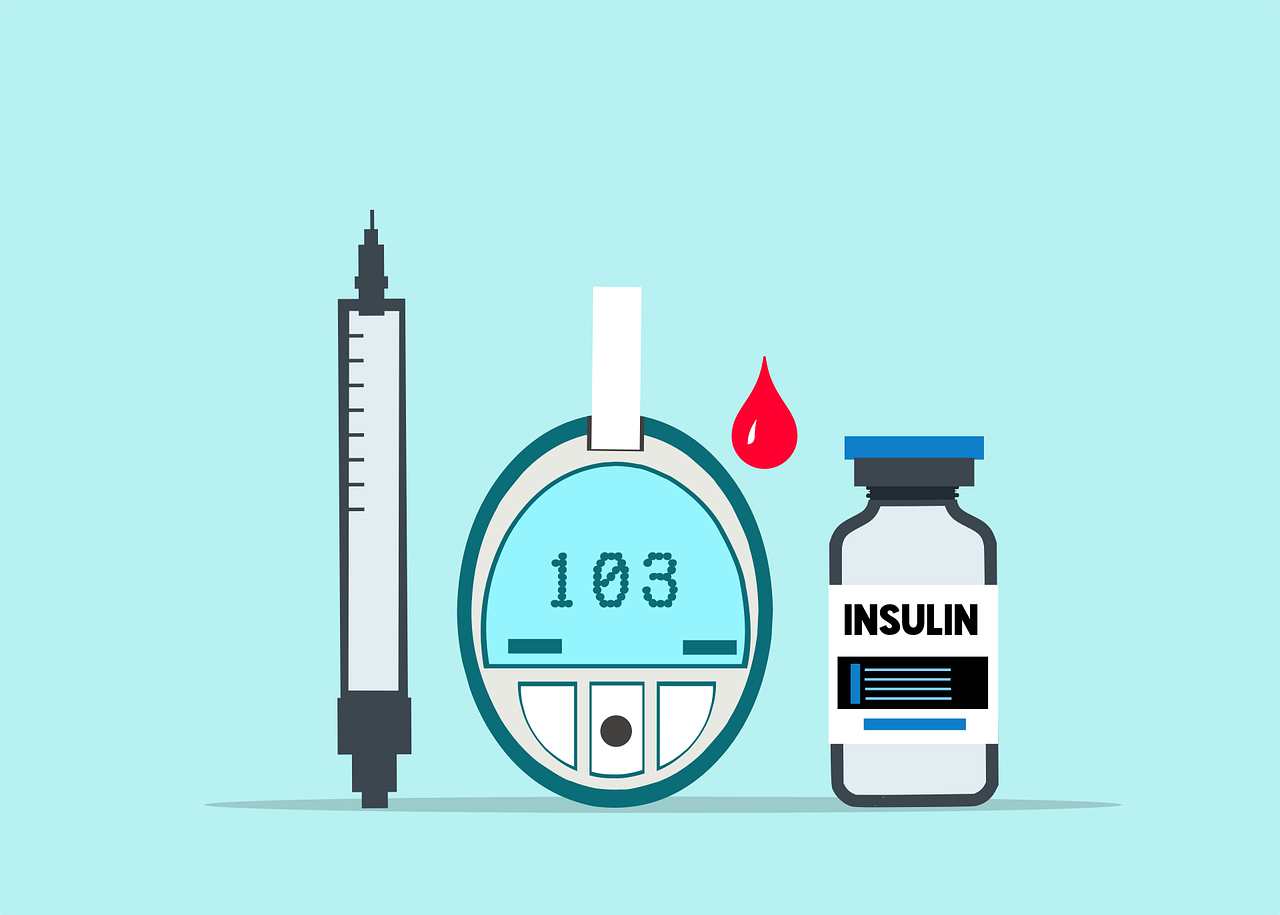
In conclusion, managing your insulin levels and blood sugar is a proactive step toward better health. Incorporating these essential foods into your daily meals can help you achieve and maintain stable blood sugar levels. Alongside a balanced diet, regular physical activity and stress management, you can take charge of your well-being and enjoy a life filled with vitality and energy.
In conclusion, managing your insulin levels and blood sugar is not just a proactive step; it’s a fundamental cornerstone of overall health and well-being. By consistently incorporating these essential foods into your daily meals, you can significantly enhance your ability to achieve and maintain stable blood sugar levels.
However, it’s important to remember that diet alone is not the sole factor in maintaining good health. Alongside a balanced diet rich in these blood-sugar-friendly foods, regular physical activity plays a crucial role in regulating insulin sensitivity and supporting overall metabolic health. Engaging in regular exercise can also help your body utilize the energy from the carbohydrates you consume effectively.
Furthermore, don’t underestimate the impact of stress on your blood sugar levels. Stress can lead to spikes in blood sugar, so incorporating stress management techniques into your daily routine, such as meditation, yoga or deep breathing exercises, can complement your dietary efforts.
By combining these elements – a blood sugar-friendly diet, regular physical activity and effective stress management – you’ll be in a better position to take charge of your well-being. The result? A life filled with vitality, sustained energy and a reduced risk of many chronic health conditions. Remember that small, consistent efforts in these areas can lead to significant improvements in your overall health and quality of life.
If you’d like to dive deeper into this subject, there’s more to discover on this page: Enablers and barriers to effective diabetes self-management: A multi …
More links
You can also read more about this here: Manage Blood Sugar | Diabetes | CDC
